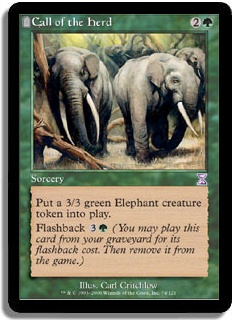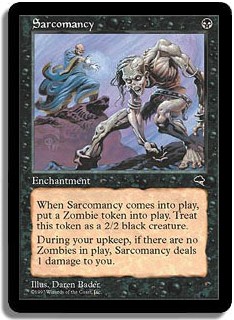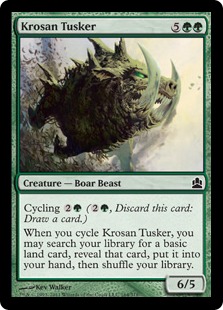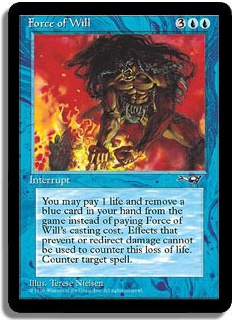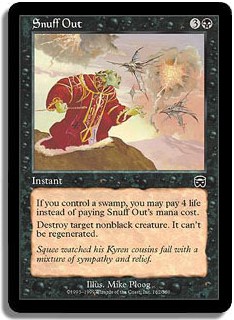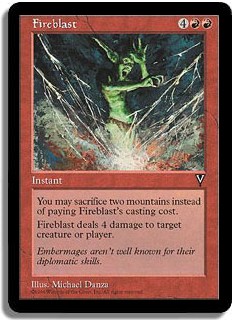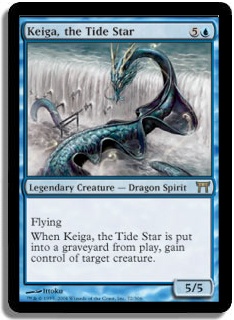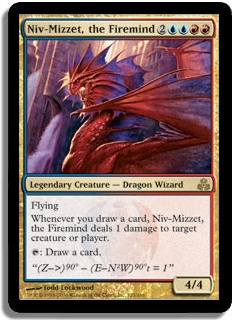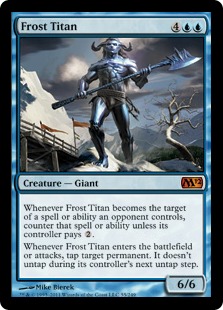As different sets come out, different themes and cube sections get strengthened in waves—Scar of Mirrodin block gave artifacts a nice shot in
the arm, as did Shards of Alara for multicolor. However, cube designers can get caught in the trap of thinking of their individual cube sections as
structured and immovable, like walls in a building. In this article, I’ll talk about one of the things many cube designers don’t spend too
much time thinking about once their cubes are built: the size of sections of their cube. Changing these cube foundations can give you some more tools
to customize your cube, and I’ll discuss how to use it effectively.
In The Beginning…
When cube drafting was in its infancy, many cubes were initially based on the first cube in Ontario, Canada, from the early 2000s, which adhered to a
strict set of guidelines for the sections:
Each section had 50 cards, with multicolor having 60 cards (5 for each multicolor pair, 1 for each tri-color pairing), resulting in a total cube size
of 410 cards.
Black, red, and white had an even 25/25 split in terms of creatures and non-creatures.
Blue was allowed to have more non-creatures than creatures, since that was blue’s specialty, but there was no set number for the amounts, unlike
with BRG.
Green was allowed to have more creatures than non-creatures, but like with blue, there was no specific ratio set.
Many early cubists such as Evan Erwin and Tom LaPille built their cubes using this structure, as shown in the Magic Show episode that got many people,
myself included, into the format, “Gleaming The Cube.”
When I started building my cube, I found problems with this rigid structured model. It’s true that, as R&D articles typically say,
restrictions breed creativity. However, when it comes to building a cube, these may not necessarily be restrictions as they are self-imposed walls.
One of the weaknesses of the 50/50 cube split was that it encourages some “cooking the books” for cards. If you look atmy cube list over on my blog, you’ll see that I have cards like Call of the Herd and Sarcomancy as creatures, but
cards like Krosan Tusker as a spell. This is because while their card face may say otherwise, cards like Call of the Herd truly act like creatures,
whereas cards like Krosan Tusker typically act more often as spells than as a creature, as Krosan Tusker is much more akin to an instant that gets a
land and draws a card for 2G than a 6/5 for 5GG, but all of these are kept consistent in terms of how they act. If someone was using a 50/50 ratio for
creatures and non-creatures, someone could try to “cook the books” by being inconsistent with considerations—considering spells like
reanimation spells to be creatures to make room for non-creatures.
In theory, the rigid 50/50 ratio is a nice guideline to help colors play according to their strengths. Blue’s good at spells, green’s good
at creatures, and the others are pretty even; what’s not to love? The main pitfall is that the “rigid” model favors aesthetics over
function.
For example, let’s say that someone has a 50/50 rigid ratio for their white section, and a really good creature removal spell is released in a
new set, but there’s no room for it in the non-creature section of white (but the new spell is better than some of the white creatures). Under
the 50/50 model, the new spell will not make it into the final cube list because of the barrier of existing spells. This results in an overall weaker
cube, since it doesn’t let your cube adjust to newly printed cards and moreover, trends in power creep. Over the past few years, we’ve seen
creatures become more powerful, and sticking to a rigid 50/50 ratio means that some of these powerful new creatures won’t be able to make it into
your cube. Since a cube is all about having the most powerful cards in your cube, isn’t that self-defeating?
Looking at my cube now, I don’t have 50/50 ratios in any of my WUBRG sections (although some are close right now).
White: 40 creatures / 22 non-creatures
Blue: 26 creatures / 36 non-creatures
Black: 32 creatures / 30 non-creatures
Red: 33 creatures / 29 non-creatures
Green: 45 creatures / 17 non-creatures
If I were sticking to a 50/50 ratio, white would be much weaker, as the plethora of recent powerful white creatures like Kor Sanctifiers and Porcelain
Legionnaire would be less represented. A lot of cubes don’t adhere to this ratio anymore, but that doesn’t mean many cubes are free from
constriction.
Rule of 5 and 45
The “rule of 5” refers to many cubes using multiples of 5 for their sections, like having 65 cards in WUBRG, 55 artifacts, 80 lands, etc.
It’s been a historical standard for cubes, but why has this been the case?
A lot of the early cubes used sections with multiples of 5—like Tom LaPille list, the aforementioned MTGOntario list, and Evan
Erwin’s list—as the amounts of cards for each section in their cubes were all in multiples of 5: for example, 70 in WUBRG, 70 lands, 60
multicolor, and 60 artifacts in the last publically available iteration of LaPille’s list. These sections having
multiples of 5 may be because some sections like multicolor require having multiples of 5 for balance, and designers kept the multiple of 5 rule to
apply to all sections in their cube. After all, if a section like WU has fewer cards than UR, it results in imbalance, and cube designers always strive
for balance in their cubes.
It could also be because non-multiple-of-five numbers appear to be aesthetically unpleasing. A list with 71 or 72 cards in WUBRG, for example, looks
pretty odd when compared to a section of 70 cards. But what relevance does this have for sets? In the grand scheme of things, does having a section of
61 really cause any imbalances when drafting or designing a cube? It doesn’t, and holding your cube to such constraints just isn’t
necessary.
The “rule of 45” is similar—where many cubes’ total size is a multiple of 45. The minimum number of cards necessary to run an
8-person draft using full 15-card packs is 360, which is the generally accepted minimum for cubes (although I’ve seen some cube lists with 180
cards; it’s hard enough to maintain a 360-card cube list, so maintaining a 180-card one would be insanely difficult). Many cube designers use the
45-card block as a metric for cube size, thinking of cubes as being in sizes such as 360, 405, and 450.
For example, I used to have a 405-card list for my cube, but because I was unable to fit in many cards, my cube eventually reached a breaking point,
and I expanded my cube to 450 cards. However, did I have to expand by exactly 45 cards? Of course not. I almost never draft a full 9-person draft or
even many 8-person drafts, so accommodating for more people wasn’t really a relevant factor; it was just a convenient number used to expand my
cube. Still, I could have expanded my cube by a different amount, like 10 or 15 cards to make my cube have a 415-420 maximum cube size.
Having a cube size that is a multiple of 45 lets you do some strategic things when drafting with the entire cube—as important free cards like
Force of Will, Snuff Out, and Fireblast are always going to be in the draft with the full cube drafted (which is also important when doing team drafts
because if I were doing a 5v5 team draft and didn’t see Fireblast on my team’s combined picks, I’d have to be sure to keep it in mind
when playing against a red player). Although, if you like having that element of surprise even when drafting with the maximum number of people, you can
have a non-multiple of 45 total, like 650 cards.
Some cubes like Evan Erwin,Kenny Mayer’s,Adam Styborski’s, and many lists on MTGSalvation’s cube forum use lists with a non-multiple of 45 for
their cube lists. So long as the actual sections themselves like WUBRG are equal, the number for the total itself doesn’t really matter. Is a
cube unbalanced if it has 71 cards in WUBRG, 70 artifacts, 60 lands, and 60 multicolor? Of course not, because all of the major colors have equal
representation.
I’ve talked about using different methods for classifying multicolor/artifacts/lands and have talked about how cards like Kird Ape can be used as
either red cards or red-green and that I’ve been a fan of using cards like Kird Ape according to where it’s most often played. Using Kird
Ape as a red card does result in some overall imbalance, but unless it comes to a point where there are a ton of those types of cards (like 10% or so),
then it shouldn’t have a gigantic factor. Still, I think every little bit helps for balance, so I use the guild system, but that’s another
article.
How many in each section?
As said earlier, there tends to be “waves” for pushing power level of sections with sets. There’s been a general power creep for
creatures in the past few years, but different sets tend to push different sections. Many people increased the multicolor sections of their cubes once
Shards of Alara was done and similarly with artifacts when Scars of Mirrodin came out. Others found that once the “new card feeling” of
Shards of Alara block wore off, they cut back on multicolor cards.
These examples show that the sections are not set in stone, but you’ll want to keep tabs on the amount of non-WUBRG (white, blue, black, red,
green—not cards like Child of Alara) cards in your cube.
Whether using a “guild” or “traditional” method for categorizing cards, I’ll discuss looking at the multicolor/artifact/land or colorless/guild systems using your cube’s WUBRG section as a metric. As cubes are
a customizable experience, you may want to experiment to find the amount that best fits your cube, but I’ll give some general guidelines for the
size of the sections.
Multicolor
One of the pitfalls with multicolor cards is that they provide very interesting and unique effects; the more powerful ones are good deals for their
cost—Watchwolf offers an unprecedented 3/3 for GW, and that card is almost never used in cubes due to lack of space! Well, that and the cards
themselves being harder to cast and thus being able to go into fewer archetypes.
Multicolor cards are interesting, since they can reward people for being in certain archetypes/color combinations, as the powerful multicolor cards can
wheel. For example, it’s much easier to wheel something like a Niv-Mizzet than something like Keiga or Frost Titan, since Niv-Mizzet will only go
into the UR archetype, whereas Keiga can go into four times the archetypes. As obvious a statement as that is, it also results in more dead picks in a
draft—if no one’s in BG, then having a lot of BG cards in a pool results in a lot of dead picks. I’ve experienced this when
I’ve drafted cubes with too many multicolor cards—particularly when I drafted cubes with some of the weaker tri-color cards, as they almost
assuredly are last picks and contribute little to a cube draft other than being fodder for decks like 4/5-color control.
Despite the raw power of multicolor cards being there, they should not comprise a majority of a cube. With relation to the cards in WUBRG, the
multicolor cards should be, at most, equal to the cards in WUBRG, but I suggest running a good amount fewer multicolor cards than WUBRG ones (I’m
at about 40 purely multicolor cards with having 62 cards in the WUBRG sections). This allows for multicolor decks (as 2+ color decks make up the
majority of cube decks) to get their powerful cards like Vindicate and Ajani Goldmane for their archetypes/splashing, but it doesn’t overload the
packs with multicolor cards, diluting the colors themselves. It’s important not to forget that an important aspect of cube design is to realize
the importance of individual colors!
Land and Artifacts
If you look at the
cube that Wizards of the Coast developed for their 2007 Invitational, you’ll notice that it didn’t use many mana-fixing lands, so people would have to commit to colors and couldn’t be so
“wishy-washy” with their picks. It’s important to find a balance for mana-fixing in cube, as too much mana fixing (in addition to
weakly supported aggro) can make it so people can algorithmically take mana fixing and force 4/5-color control.
I think that the Wizards 2007 cube went too far in the “struggling to make manabases” direction. When it comes to lands in cube, especially
mana-fixing lands in cube, we have a lot of options—even Innistrad gave us a new cycle of enemy-color aligned lands and a set of allied-color
aligned lands like Kessig Wolf Run, Gavony Township, and Moorland Haunt. So how many lands should be used in a cube?
I’ve found that because lands, for the most part, support multicolor (although lands like Strip Mine/Library of Alexandria/Maze of Ith obviously
can be played regardless of color), they occupy a middle space between WUBRG and multicolor, where I’d consider the range of lands to be between
the amount of multicolor cards and WUBRG cards (for example, having 55 lands in a cube with 60 cards in WUBRG and 50 multicolor cards). Again, this
creates a nice balance between apt mana-fixing and too much, but like with all of the sections, you can season to taste, especially if your drafters
are finding that there’s too much/too few fixing or utility lands.
On the other hand, artifacts strengthen ALL colors in a cube, and thus, I’ve found that there’s a lot of wiggle room for artifacts in a
cube. There are a lot of natural defenses in cube for artifacts through cards like Viridian Shaman and Kor Sanctifiers, but it’s important to not
have it overload your cube drafts. It won’t ever come to a point like Mirrodin block, where you can just keep taking artifacts/non-color aligned
cards, since those blocks have a much higher concentration of artifacts than any cube would want to have. Because of this wiggle room, I’ve found
that the range is pretty big. I suggest artifacts to be, at most, to be at about the size of the WUBRG sections within a range of 10-15 cards in either
a + or – direction, but a cube can easily season to taste for artifacts and can go to ranges like having an artifact section that’s 150% of WUBRG
or 50%, but as I said earlier, it’s preferable to give artifacts a section that’s similar to WUBRG so it can support the colors well.
If you’re using a guild-type of system that I’m using in my cube, then the numbers are a little different (although the implementation is
the same).
The multicolor section can be and generally is bigger than WUBRG, since it encompasses a lot of things such as color-aligned lands, mana fixers like
signets and talismans and multicolor cards, but the upper range should be at about 150% of the WUBRG section. Similarly to a traditional artifact
section, there’s a lot of wiggle room, so you can season to taste and can choose to include a lot of colorless cards since they support the
colors well, but having a colorless section that’s close to WUBRG is a good idea—I have 62 cards in each WUBRG section and have a 60-card
colorless section but could easily see the colorless section going to 70 as easily as I could see it becoming 50.
No matter how many multicolor, artifact, land, and WUBRG cards you use, the main lesson that I want you to come away from this article with is this: don’t be afraid to shake things up and change the sections of your cube! In my cube, for example, I’m considering
taking out 1 multicolor card from each “guild” and either putting in 1 card in WUBRG and 5 colorless ones or replacing the 10 multicolor
cards with 2 in WUBRG. As you can see, there are a lot of doors that can be opened through changing your sections!
Few things are truly set in stone in cube aside from the staple cards (and even some of those cards end up having a surprisingly short cube shelf
life), and the structure of the sections themselves should be no different. You can always change them back if you find that there’s too many
multicolor cards or too few of them, after all!
I hope that this article has given you some new ideas for shaping the contents of your cube. Sometimes in cube design, we take things like section size
for granted and don’t challenge those preconceptions; I’ve found that thinking outside of those preconceptions gives you many more tools to
customize your cube into the best draft environment ever.
May all of your opening packs contain Sol Rings!
@UsmanTheRad
on Twitter
My blog, I’d Rather Be Cubing, featuring my powered & pauper cube lists: http://idratherbecubing.wordpress.com
Cube podcast that Anthony Avitollo and I
co-host: The Third Power

